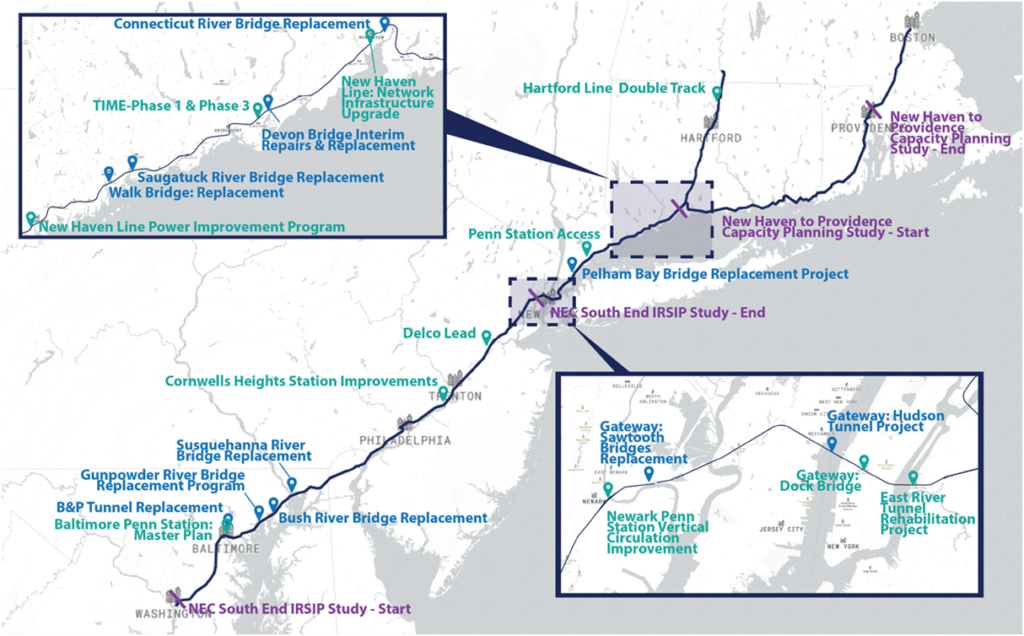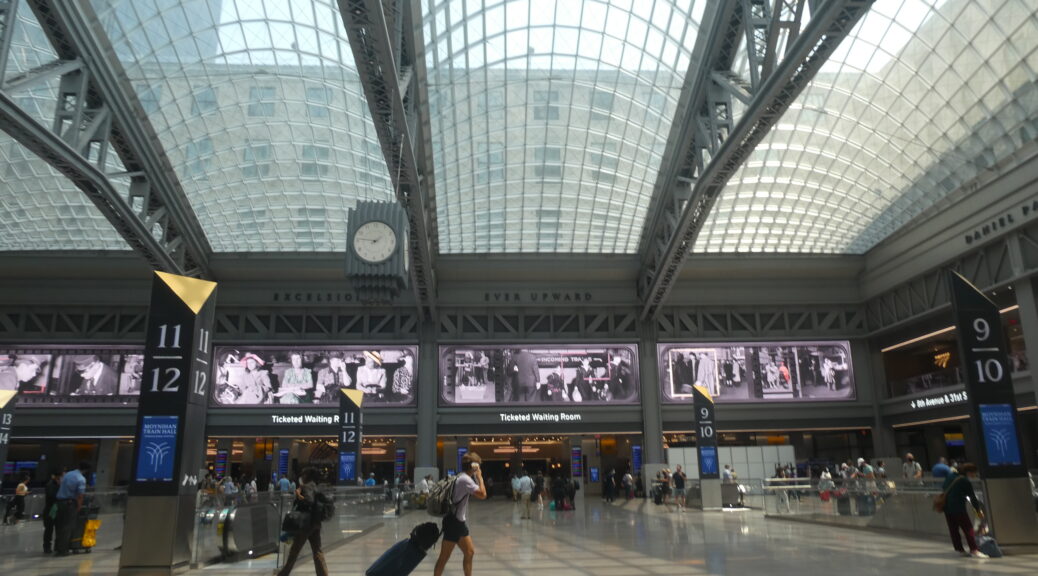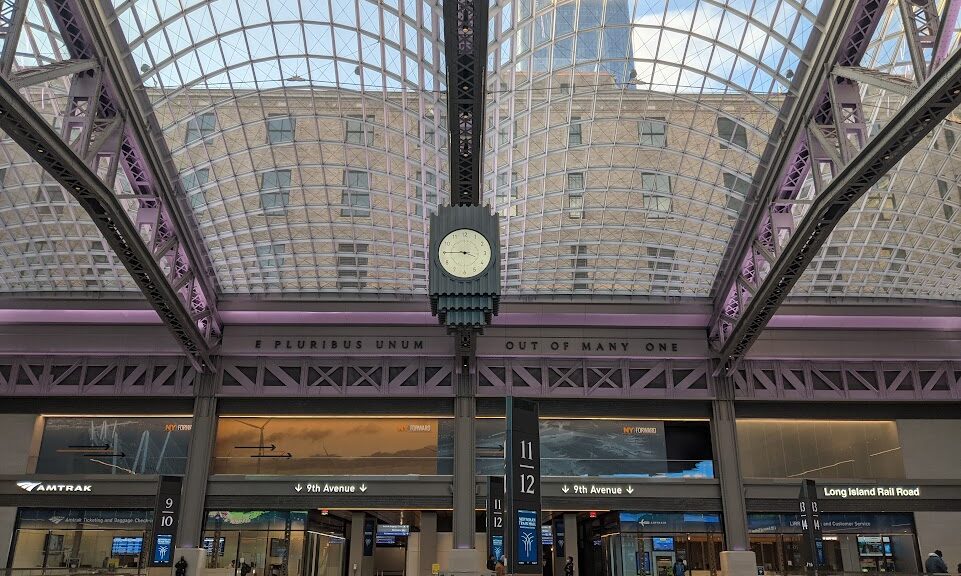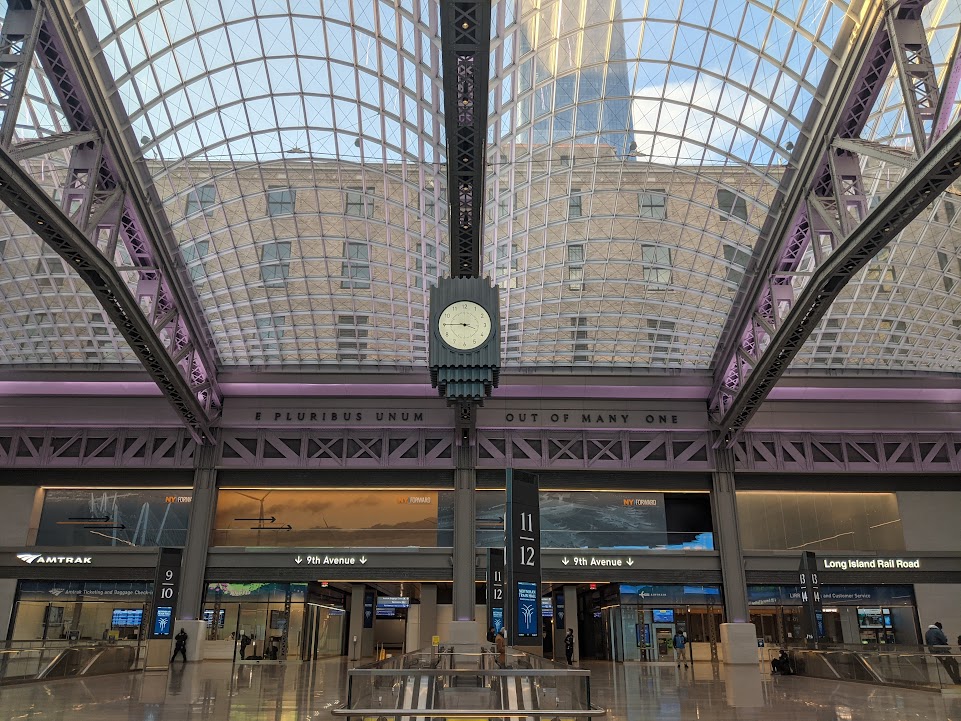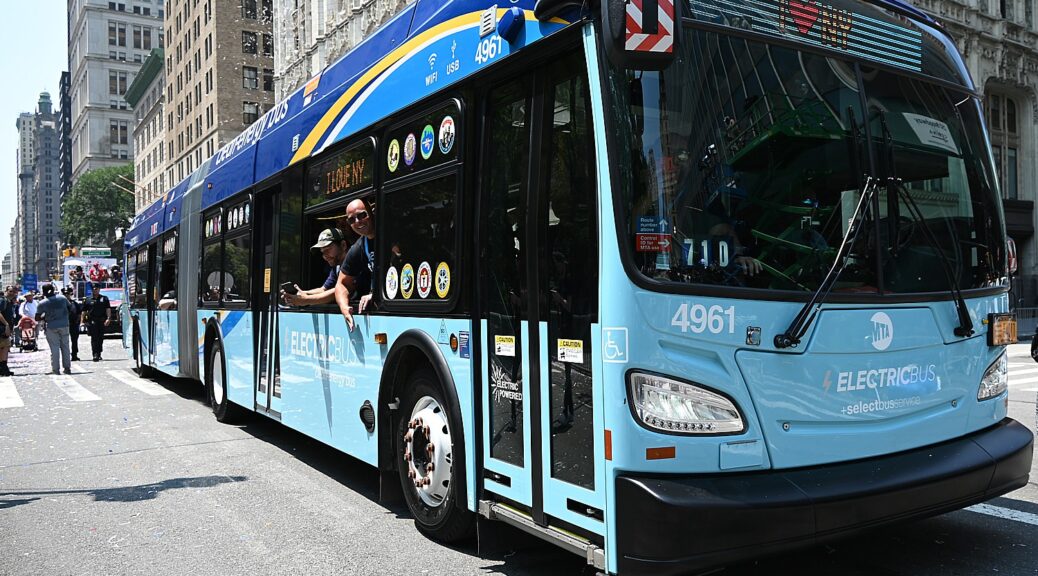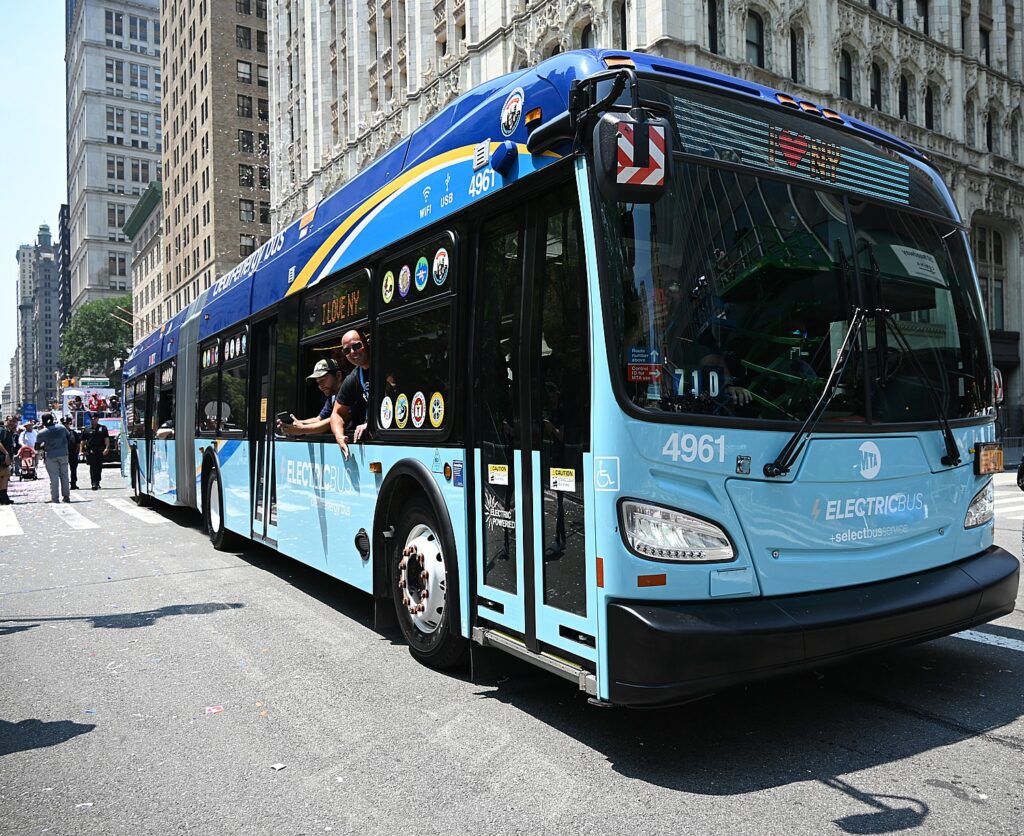This fact sheet from the White House describes how President Biden is using $16.4 billion from the Bipartisan Infrastructure Law to repair and replace critical rail infrastructure along the Northeast Corridor, to provide faster and more reliable passenger rail service, and create more than 100,000 construction jobs:
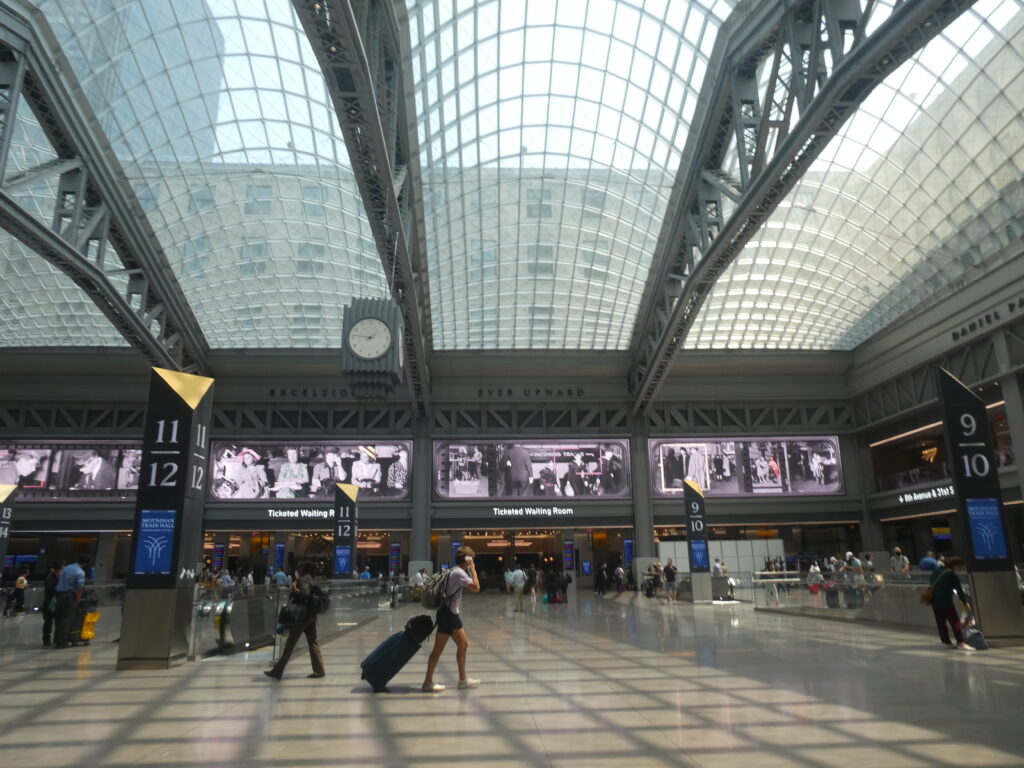
Bidenomics and President Biden’s Investing in America agenda are tackling long-standing infrastructure needs, supporting communities nationwide, and making it possible to get people and goods where they need to be safely, quickly, and conveniently. The President’s Bipartisan Infrastructure Law makes the largest investment in passenger rail since the creation of Amtrak, with a $66 billion total investment in rail. Today, President Biden is announcing $16.4 billion in new funding for 25 passenger rail projects on Amtrak’s Northeast Corridor, moving the United States closer to his vision for world-class passenger rail. The investments announced today will rebuild tunnels and bridges that are over 100 years old; upgrade tracks, power systems, signals, stations, and other infrastructure; and, advance future projects to significantly improve travel times by increasing operating speeds and reducing delays. Combined with Amtrak’s nearly $9 billion fleet replacement program, which will replace over 1,000 locomotives and coaches with state-of-the art and Made-in-America equipment, these investments will ensure that train service is more convenient and climate-friendly than either driving or flying. The funding will also contribute to more than 100,000 good-paying union jobs in construction. President Biden will travel to Bear, Delaware to make the announcement.
The Northeast Corridor, running from Boston, MA, to Washington, DC, is the most heavily traveled rail corridor in the United States, supporting 800,000 trips per day in a region that represents 20 percent of U.S. Gross Domestic Product. The trains carry five times more passengers than all flights between Washington and New York. Amtrak trains on the Northeast Corridor also emit up to 83% less greenhouse gas emissions compared to car travel and up to 72% less greenhouse gas emissions than flying. If the Northeast Corridor shut down for a single day, it would cost the economy $100 million in lost productivity. Despite its importance, the Corridor hasn’t seen major investment in generations. The Northeast Corridor that exists today is the product of investments that date back to the 1830s, and many of the existing bridges and tunnels were built in the early twentieth century. Thanks to the President’s Bipartisan Infrastructure Law, the Northeast Corridor is finally on track to be rebuilt to meet the needs of 21st century travelers.
Today’s $16.4 billion announcement is through the Federal Railroad Administration’s Federal State Partnership for Intercity Passenger Rail grant program, and reflects nearly $9 billion in FY 2022 and FY 2023 funds and $7.4 billion in future commitments through phased funding agreements.
Major awarded projects include:
Gateway Hudson River Tunnel (NY/NJ) will receive $3.8 billion in a phased funding agreement to rehabilitate and expand the Hudson River Tunnel between New York and New Jersey, which is over 100 years old, serves 200,000 passengers daily, and was damaged by Superstorm Sandy. The overall Gateway Hudson River Tunnel project will improve resiliency, reliability, and redundancy for New Jersey Transit (NJ Transit) and Amtrak passengers traveling on the Northeast Corridor between New York and New Jersey. Combined with other investments, the total Biden Administration commitment to the tunnel project will be a record $11 billion. President Biden visited this project in January to announce a $292 million DOT MEGA program grant for the Hudson Yards Concrete Casing, which supports the critical connection between the new Hudson River Tunnel and New York Penn Station. In June, the Hudson Tunnel Project received a $25 million grant through DOT’s RAISE program to support construction of the new tunnel portal through the Tonnelle Avenue Bridge and utility relocation project in North Bergen, NJ. On Friday, Administration officials participated in a groundbreaking to officially begin construction on the New York side of the tunnel. The Hudson Tunnel Project is a critical component of the Gateway Program — a comprehensive rail investment program that will improve commuter and intercity services, add needed resiliency and create new capacity for the busiest section of the Northeast Corridor. The project is critical to the northeast regional economy — not only will the project generate $19 billion in economic activity over the Project’s construction period, addressing this critical chokepoint on the Northeast Corridor supports the $50 billion that workers riding on the NEC contribute to the economy annually.
- Frederick Douglass Tunnel (MD) will receive $4.7 billion in a phased funding agreement to replace the 150-year-old Baltimore and Potomac Tunnel, increasing speeds from 30 mph to 110 mph and reducing delays on the entire Northeast Corridor. The tunnel’s tight curvature and steep incline requires trains to reduce speeds to 30 mph. These issues create chronic delays — more than 10% of weekday trains are delayed, and delays occur on 99% of weekdays. The tunnel is the largest Northeast Corridor bottleneck between Washington and New Jersey and a single point of failure for the roughly 24,000 Amtrak and Maryland Area Commuter (MARC) passengers who rely on it daily. The President visited this project in January to announce the signing of a project kickoff agreement between Amtrak and the State of Maryland and a Project Labor Agreement between Amtrak and the Baltimore-DC Building and Construction Trades Council. Initial construction began in March of this year, and Amtrak recently awarded a contract for construction on the southern approach.
- Susquehanna River Bridge (MD) will receive $2.1 billion in a phased funding agreement to replace an existing 100-year-old rail bridge with two new two-track spans that will allow speeds to increase from 90 mph to 125 mph, and improve reliability and trip times. Amtrak, the MARC rail and Norfolk Southern Railway use the bridge to transport both passengers and freight and therefore experiences a high volume of rail traffic. Roughly 19,000 passengers travel over the existing bridge every weekday. As part of this replacement project, the existing movable bridge will be replaced with high-level fixed bridges, which will also improve navigation for boats on the Susquehanna River.
- Penn Station Access (NY) will receive $1.6 billion in a phased funding agreement to repair and rehabilitate 19 miles of the Amtrak-owned Hell Gate Line, including tracks, bridges, and signals. The project will introduce Metro-North service to Penn Station, increase Amtrak service, and the cut local transit travel time from the Bronx to Manhattan by as much as 50 minutes. In addition to reducing travel times, New York MTA’s investment will create four new fully ADA-accessible rail stations, and the added service and reduced travel times will have significant benefits for low-income communities in the Bronx. This project is in active construction as of 2023.
- The Connecticut River Bridge (CT) will receive $827 million to replace a 116-year-old bridge with a new modern, resilient movable bridge. Replacing the existing structure will increase reliability and safety, and rail speeds on the bridge will increase from 45 mph to 70 mph. This project is fully designed and set to begin construction in 2024.
Two planning studies are also included in the investment: one to examine opportunities to increase speeds and reduce travel time between Washington, D.C. and New York City, and one to study future infrastructure options to improve speed, resilience, performance, and capacity to support faster trains traveling on the Northeast Corridor through Connecticut and Rhode Island.
Each new awarded project – from the Frederick Douglass Tunnel to the Connecticut River Bridge – will improve travel times by addressing the delays associated with the constant maintenance and repair of old Northeast Corridor infrastructure. These delays are estimated to result in almost 245,000 train delay minutes annually, and the Bipartisan Infrastructure Law funding will support replacing infrastructure that could result in almost 110,000 delay minutes saved annually.
Creating Good-Paying Union Jobs
Across all Northeast Corridor projects, an agreement is in place between Amtrak and North America’s Building Trades Unions (NABTU) that ensures Amtrak’s large civil engineering construction projects will be performed under a collective bargaining agreement that addresses points such as wages, benefits, working conditions, and promoting diversity and veteran hiring in the construction trades. With this agreement, Amtrak and NABTU will promote a strong workforce pipeline to prevent work disruptions; contractors and subcontractors share Amtrak’s commitment to paying fair wages and benefits; and Amtrak and NABTU can move forward with Bipartisan Infrastructure Law-funded projects with efficient labor-management relations.
Amtrak expects the Hudson River Tunnel project will result in 72,000 direct and indirect jobs during construction with union partnerships for job training. The Frederick Douglas Tunnel program is expected to generate 30,000 direct and indirect jobs, including approximately 20,000 construction jobs. Amtrak is investing more than $50 million in local workforce development and community investments, including pre-apprenticeship and apprenticeship programs to ensure that local workers in West Baltimore can access these jobs.
Progress for Other Rail Investments
After waiting years for new federal funding, 2023 is the year in which major rail and transit projects across the country are moving forward.
Today’s investment follows major investments in rail safety through track improvements, bridge rehabilitations, fewer grade crossings, upgrades on routes carrying hazardous materials, and enhanced multi-modal connections to keep people living near, working on, and who travel along America’s rail lines safer:
- Last month, FRA announced more than $1.4 billion from President Biden’s Bipartisan infrastructure law for 70 rail improvement projects in 35 states and Washington, D.C. This is the largest amount ever awarded for rail safety and rail supply chain upgrades through the Consolidated Rail Infrastructure and Safety Improvements — or CRISI — program. This popular program has quadrupled since the President signed the Bipartisan Infrastructure Law. While the majority of selected projects support freight rail safety and supply chains, CRISI investments are also laying the groundwork to expand world-class passenger rail to more communities nationwide. For example, investments in Virginia will result in two new Amtrak round trips and three new commuter rail round trips on the RF&P corridor between Washington, D.C., and Richmond, VA — a critical link between Northeast and Southeast states — while also improving the fluidity of CSX’s freight network. In California, two additional daily round trips will be added to the Capitol Corridor between the cities of Sacramento and Roseville, and a project eliminating grade crossings in the Central Valley will bring high-speed rail one step closer to becoming a reality. At least $376 million, or 25 percent of the amounts appropriated, was made available for projects in rural areas. In addition to improving passenger rail service, the CRISI program provides funding to further develop workforce and industry in America around rail. For example, Amtrak will receive up to $8.8 million for a pilot apprenticeship training program to recruit and train new track foremen and inspectors in Pennsylvania.
- In June, FRA announced $570 million for 63 projects in 32 states under the new Railroad Crossing Elimination Program, or RCE, created by the President’s Bipartisan Infrastructure Law. This inaugural round of funding will address more than 400 at-grade crossings nationwide, improve safety, and make it easier to get around railroad tracks by adding grade separations, closing at-grade crossings, and improving existing at-grade crossings where train tracks and roads intersect. Over each of the next four years, additional RCE Program funding will be made available annually. Project selections for other grant programs that will improve freight rail safety and efficiency, strengthen supply chains, and expand the passenger rail network — representing billions of dollars in infrastructure law investments — will be announced in the coming months.
- In 2022, the Biden Administration announced $233 million in grants to upgrade intercity passenger rail service across the country through the Federal-State Partnership for State of Good Repair Program. These investments will help replace bridges and tunnels along the Northeast Corridor, many of which are over 100 years old. Grants were also awarded to improve rail infrastructure in California, Michigan, and improving Chicago Union Station.
- On November 30, 2022, the Federal Railroad Administration granted $4.3 billion to Amtrak, which represents the first year of the $22 billion in direct funding to Amtrak provided in the Bipartisan Infrastructure Law. Amtrak is using these funds to modernize the intercity passenger rail network, modernize and increase accessibility at more than 280 Amtrak-served stations across the country, and replace Amtrak’s existing fleet of over 1,000 railcars and locomotives with accessible, comfortable, state-of-the-art equipment. Portions of the new fleet will enter service in 2023, and over 525 new railcars and locomotives will begin service by the end of the decade. Amtrak debuted the design of the new “Airo” railcars in late 2022. In fiscal year 2023 alone, Amtrak has invested nearly $3 billion in 750 projects across the country. By the end of 2023, 15 Amtrak stations will have been brought to full ADA compliance, with 25 more upgraded with passenger information display stations. Through these investments, Amtrak has created nearly 5,000 jobs, including employing over 4,000 union workers.
- Later this year, FRA will award billions from the Bipartisan Infrastructure Law for intercity passenger rail projects across the country under the Fed-State Partnership National Program. High-speed rail projects are eligible for funding from this program.
Northeast Corridor Awarded Projects Map
